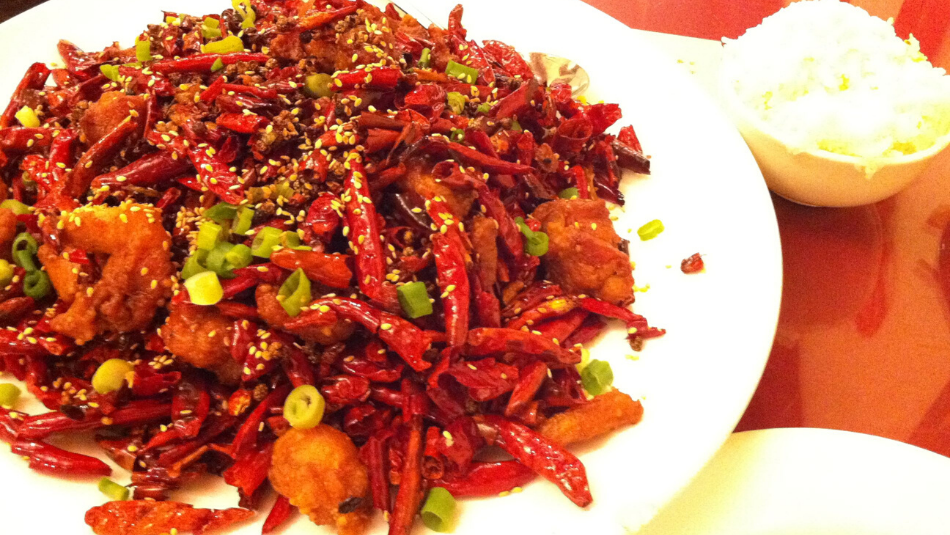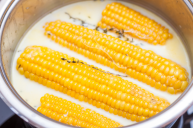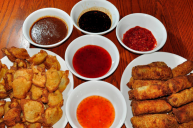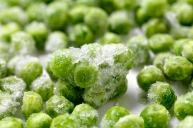My favorite Mexican restaurant makes this green hot sauce that is amazing. Its sinus-clearing spiciness is so off the charts they only serve it in a tiny container and since I'm the only one at our table who loves spicy food, I can eat the whole thing. And then gulp down glass after glass of water (which, spoiler alert, is not the best way how to make food less spicy).
Videos by Wide Open Country
There are some great hacks to making food less spicy, both when you're eating and when you're cooking. Some of the techniques may surprise you, but they're backed by science so you know they're good.
First, why are peppers so hot? Chili peppers, which means everything from cayenne to jalapeno to every other kind of hot chili pepper, have something called capsaicin which gives them varying levels of heat. When capsaicin hits your taste buds, a signal is sent to your brain that gets interpreted as "hot." Your mouth reacts by making everything go numb; it's a defense mechanism.
You may fall on a spectrum that loves that feeling or you may try to avoid it at all costs. But even those of us that love spice may get a bit too much from time to time and need to find something that offers a cooling effect.
If you get a little overzealous adding spice to a recipe, it's fairly easy to take the heat levels down a bit. If your prepared food is still too much of a spicy dish, there are a few things you can do to handle the heat. Here are our favorite hacks for how to make food less spicy.
How to Make Food less Spicy While Cooking
If you're trying a recipe with lots of spicy ingredients, it's important to taste throughout the cooking process so you'll know if the spice is too much. If you find the spiciness is more than you wanted, here are five ways to fix it.
Dairy: Milk contains a protein called casein which is effective at breaking up the capsaicin in hot peppers. If your dish is too spicy, try adding milk, cream, sour cream, or a spoonful of plain yogurt. You can also add cheese.
Sugar: Yes, a spoonful of sugar helps the spicy food go down. It's not because the sweet taste balances the spicy, it's because capsaicin is oil-based and the sugar helps soak up the oil. Stir in a bit of honey or sugar, but keep tasting so you don't end up with an overly sweet dish.
Acid: One way of handling too much oil is too add acid for balance. So if you get too much spice, try adding lemon juice, lime juice or vinegar. Use something that works with the flavor of your dish, and be mindful that you don't overbalance with the acid. Using sugar and acid together can really help, too, to make the food less spicy.
Nut butter and nut milks: Because capsaisin is oil-based, adding something with additional oil (or fat) helps dilute the capsaisin. Nuts are high in fat, so adding nut-based butter and milk can help, if they fit with the dish you're cooking. If you're making a Thai dish that has too much heat, coconut milk or a spoonful of peanut butter will both add to the taste and lower the spice level a bit. Other Asian dishes might benefit from cashews.
More of an ingredient: If you bulk up your dish overall with more of an ingredient, it will dilute the overall spice. For example, if you're making soup, add more liquid. If it's a stir fry, add more rice; for chili, add more tomatoes or beans. Adding starch can help soak up the spice, so if it's right for the dish, adding rice or potatoes can go a long way to lowering heat levels.
How to Handle the Heat When Eating
Once the food is on your tongue, you have a few options for how to deal with resulting heat and numbness. Water isn't one them, because water isn't effective at dealing with an oil-based substance like capsaisin.
Dairy products: A little bit of dairy is the best way to help your mouth recover. Try drinking milk or eating a spoonful of yogurt to make food taste less spicy.
https://www.instagram.com/p/B5UhibHh2GX/
Sugar: Try putting sugar or honey on your tongue for a minute, or suck on a sugar cube if you have them. Just as in cooking, the sugar absorbs the capsaisin, helping handle the effect of spicy food when eating.
Starch: Starch absorbs the capsaisin and helps to create something of a barrier between it and your tongue. Try eating some bread, rice or tortillas. Potatoes work, too, to make food taste less spicy.
Acid: There is a reason fruit salsas are popular with spicy food; the acid in lemons, pineapples, and tomatoes helps to cut the spiciness of chili peppers. If you overdo it with the heat, try biting into a tomato or even an orange slice.
Don't let the fear of cooking or eating something too hot keep you from trying all the amazingly spicy food out there. With these easy hacks, you can handle the heat!




